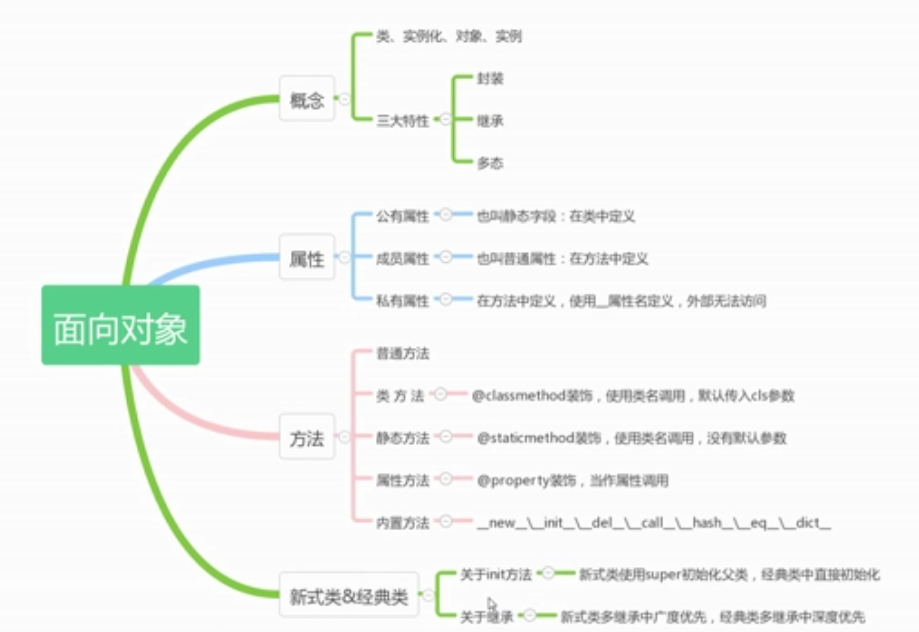面向对象进阶-反射、面向对象图式总结(一)
反射
#反射 *****
# name = 'alex'
# 'name'
class Teacher:
dic =
{'查看学生信息':'show_student','查看讲师信息':'show_teacher'}
def
show_student(self):
print('show_student')
def show_teacher(self):
print('show_teacher')
@classmethod
def func(cls):
print('hahaha')
alex =
Teacher()
for k in Teacher.dic:
print(k)
key = input('输入需求 :')
#
print(Teacher.dic[key])
if hasattr(alex,Teacher.dic[key]):
func =
getattr(alex,Teacher.dic[key])
func()
# # alex.show_student()
'show_student'
# func = getattr(alex,'show_student')
# func()
# hasattr getattr delattr
# if hasattr(Teacher,'dic'):#hasattr、getattr搭配使用,'dic'有就取,没有就不取(没有不会报错)
# ret =
getattr(Teacher,'dic') # Teacher.dic # 类也是对象,通过‘dic’字符串去命名空间去找dic对于的变量,找到后返回
# # ret2 =
getattr(Teacher,'func') # 类.方法 teacher.func,返回方法名的内存地址
# # ret2()
#
print(ret)
# menu = Teacher.dic
# for k in menu:
# print(k)
# 通过反射
# 对象名 获取对象属性 和 普通方法
# 类名 获取静态属性 和类方法 和 静态方法
# 普通方法 self
# 静态方法 @staticmethod
# 类方法 @classmethod
# 属性方法
@property
# 继承
# 封装的
#面向对象图式总结

# 学员管理系统 : 开发规范
# 整理面向对象的所有知识点
# 时间计划表 :周末干什么 中等偏下的 每周来一天自习



